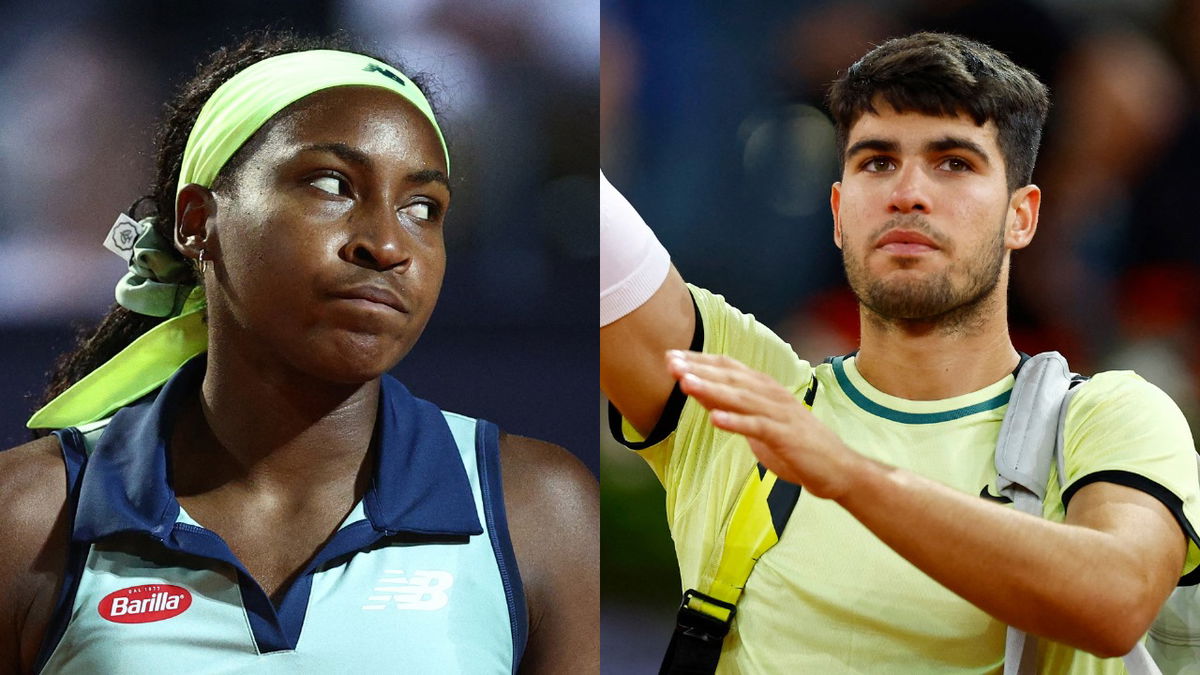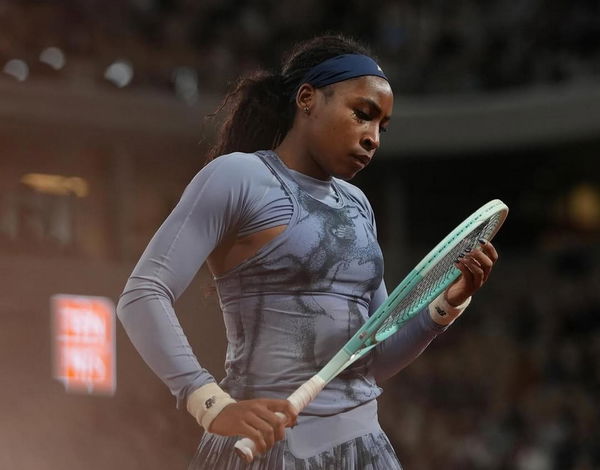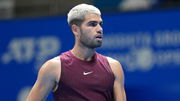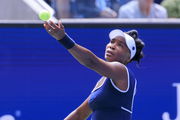
Imago
Image credits – Imago

Imago
Image credits – Imago
With total Grand Slam prize money reaching roughly $440 million in 2025, the year has been a landmark for tennis. Yet as the numbers climb, questions about how that wealth is shared are coming back into focus. After his comfortable win over Sebastian Baez in the R32 of the Japan Open, Carlos Alcaraz, one of the players who co-signed a second formal letter to the Grand Slam organizers on July 30, called the current system “a little bit a mess between everything, the ATP and the Grand Slams,” adding that players are “trying to make things better.“ Fittingly, his fellow co-signee, Coco Gauff, may be busy chasing another China Open title, but she, too, has stepped forward to make her voice heard.
Watch What’s Trending Now!
When asked about elite players pushing for a bigger share of Grand Slam prize money in the post-match conference after her first round victory, Gauff said: “It’s been a very long process. There is a players’ representative who I want to have a say because I couldn’t attend the meetings as I had training at that time. I was informed, and I don’t have much information; all I know is that this started this past Indian Wells, and I signed the letter along with the other top 10 players. The goal is to boost the prize money for players in Grand Slams, not just for us but also for players ranked in the top 200 or 300. We are trying to leverage the fact that the top-ranked players can exert pressure and are listened to a bit more, unfortunately.”
While the prize money increased, the prize pool has increased from 2024 to 2025 at each Grand Slam by varying amounts. The AO was the first to do it, implementing a 12% rise to $63.1 million on offer. This move helped close the gap with the French Open, which boosted its tally up 5% to $69.5 million, with Wimbledon going up 7% to $71.5 million. But the biggest shift came at the US Open, rising 20% to a whopping $90 million. Despite these rises, players receive about 16% of the total revenue generated by these events. One could argue that both Gauff and Alcaraz tasted title triumphs at the majors this year, and that translated quite well in financial terms, too. But as she said, for players ranked outside the top 10, the financial landscape is considerably more challenging.
ADVERTISEMENT
Both players won around $2.9 million at the French Open. But with his US Open triumph, the Spaniard added $5,000,000 more to his purse, too. As per Sportico, Alcaraz is currently leading in tennis prize money (in 2025) with a staggering $15.64 million in tournament winnings through September. Gauff sits in the fifth spot on that list with $6.35 million. Players ranked from 11- 50 earn around $5M- $1.6M. It’s those ranked between 101 and 250 who often face financial strain.

Imago
Image Credits: WTA/Instagram
As per an article published by Tennis Insider Club in 2024, top 50-100 players on the ATP/WTA tours manage to earn around 200K-$500K/year, but the majority of it still goes to travel, coaching, and taxes. Players ranked 100-200 earn $50K-$150K/year, often struggle to even manage their $150k+ annual expenses. Furthermore, ITF/ Challenger players earn even less, with some tournaments offering them as low as $3k to the winners.
ADVERTISEMENT
This is in stark comparison to other sports like the NFL, MLB, or NBA where the percentage of revenue sharing can range from 30-50%. In fact, the NBA offers an average salary of $9.6M, and in Golf, even players ranked outside of the top 100 can still make millions. And that’s where a second letter comes in, building upon an earlier one sent in March, following Novak Djokovic’s antitrust lawsuit against tennis governing bodies.
At that time, in an interview with Marca, Alcaraz said, “Tennis is a well-paid sport, but the percentages have to be fair.” To address these disparities, a group of top 10 players, including Gauff, Alcaraz, Aryna Sabalenka, Iga Świątek, Jannik Sinner, and Jack Draper, sent the latest correspondence call for an increase in players’ share of revenues from the current 16% to 22% by 2030. Additionally, it demands the establishment of a $12 million annual fund dedicated to player pensions, health, and maternity benefits, and the creation of a new player council to provide athletes with a greater voice in tournament decisions.
ADVERTISEMENT
If it’s accepted, this would see the AO prize pool exceed $100 million and the US Open surpass $150 million. Combining the four Slams, the total prize pool was around $440 million in 2025, and if this stands, this number could well exceed $500 million within the next five years. To make it happen, the players have enlisted Larry Scott, former WTA CEO and Pac-12 commissioner, as a consultant.
Meetings have already taken place between Scott, the players, and leaders of the four Slam bodies—the All England Club, the French Tennis Federation, Tennis Australia, and the USTA. Each organization responded to the letter. The USTA’s reply, signed by interim co-CEO Brian Vahaly and US Open tournament director Stacey Allaster, highlighted past growth, noting the US Open purse had grown 57% over the past five years.
They emphasized that increases, like this year’s $90 million pool, reflected collaboration from players, such as adding an extra day to the main draw. The statement also pledged continued direct, transparent discussions to build a stronger future for the sport and its athletes.
ADVERTISEMENT
Coming back to the on-court happenings, Gauff has struggled a bit ever since her title triumph at the French Open. But now, she has gotten off to a stellar start in Beijing. She’ll be facing the 2021 US Open finalist, Leylah Fernandez, in her next match, but before that, let’s take a look at what she said about her performance in the opening match.
Coco Gauff shares her thoughts about her match against Kamilla Rakhimova
Coco Gauff took down the Russian star by 6-4, 6-0 in the R64 clash. Although the American had a shaky start in this match as she faced four break points, the reigning champion managed to save all 10 break points in this epic duel to wrap up the match in just 1 hour and 43 minutes. With this win, she has now become the youngest player to register eleven wins in the women’s singles event at the China Open since the inception of the tournament in 2004.
ADVERTISEMENT
While sharing her thoughts about the match in the press conference, she said, “I expected a tight match because it was the first one since the US Open. She is a great player and has been competing well in recent tournaments, but I found my rhythm and took advantage of it. Initially, I was a bit tense, but I managed to relax, and I think it was evident in the second set score. I’m also very happy with my Chinese fans, who treat me wonderfully every year and give me many things that I will cherish forever.”
She’s “super happy” to make a comeback to the place where she had won the title twelve months ago. All Gauff wants now is to create some more good memories in Beijing. But in order to keep her title defense hopes alive, she needs to beat Fernandez in the next round. Although Coco Gauff has a 2-0 record against the Canadian, it still won’t be a cakewalk this time. Fernandez will be keen to take her revenge on the American. Who’s your pick in this epic duel, though?
Top Stories
Roger Federer Draws Criticism from Swiss Government Chief for Tourism Boom in Country

Stefanos Tsitsipas Considered Quitting Tennis After Major Personal Setback

Carlos Alcaraz Gets Harsh Reality Check After Father’s Reported Role in Juan Carlos Ferrero Split

45-Year-Old Venus Williams Receives 2026 Australian Open Wildcard Entry

Why Carlos Alcaraz Might Not Win the Australian Open in 2026?

ADVERTISEMENT
ADVERTISEMENT
ADVERTISEMENT

